#arcsecond
Explore tagged Tumblr posts
Text

STORM COMES TO THE CRADLE OF THE SUN




characters from THE S☉LAR SYSTEM
#illustration#artists on tumblr#comics#shortbox comics fair#sbcf2024#queer comics#landscape#sci fi#scifi#queer#trans#butch#the solar system#birth of the sun#one arcsecond
286 notes
·
View notes
Text
i wrote a character study that ended up becoming a whole short story about Enver, and to a lesser degree Dan (from my comic...s.) i'm somehow shockingly not embarrassed of it and think it turned out pretty alright, so like i want people to see it! it's a bit heavy, and a google doc seems suspect so i stuck it on ao3. not all of it's up yet, maybe half...? yeah like half. but it's complete so i'll do the rest soon.
also it's got big time porneaux! and mind the warnings extremely!
THE THAW (1967-1987)
suggested listening
Black Tape For A Blue Girl
Again, To Drift (For Veronika)
Dagger
I Have No More Answers
Eating Rose Petals
I betray myself / for years on end / breathing is so difficult / when you’ve chosen to suffocate
#my writing#birth of the sun#one arcsecond#dan#enver#trans#incel stone top 4 volcel stone top and making each other... um... not that anymore
5 notes
·
View notes
Text





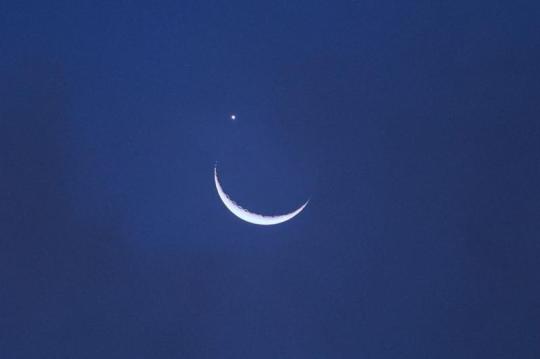

Occultations by the Moon
The term occultation is most frequently used to describe lunar occultations, those relatively frequent occasions when the Moon passes in front of a star during the course of its orbital motion around the Earth. Since the Moon, with an angular speed with respect to the stars of 0.55 arcsec/s or 2.7 μrad/s, has a very thin atmosphere and stars have an angular diameter of at most 0.057 arcseconds or 0.28 μrad, a star that is occulted by the Moon will disappear or reappear in 0.1 seconds or less on the Moon's edge, or limb. Events that take place on the Moon's dark limb are of particular interest to observers, because the lack of glare allows easier observation and timing.
The accurate timing of lunar occultations is performed regularly by (primarily amateur) astronomers. Lunar occultations timed to an accuracy of a few tenths of a second have various scientific uses, particularly in refining our knowledge of lunar topography.
source
image credit: Tom Fleming, Elias Chasioti, Delberson Souza, Bob Schiff, Fausto Lubatti, Sergio Scauso
1K notes
·
View notes
Text
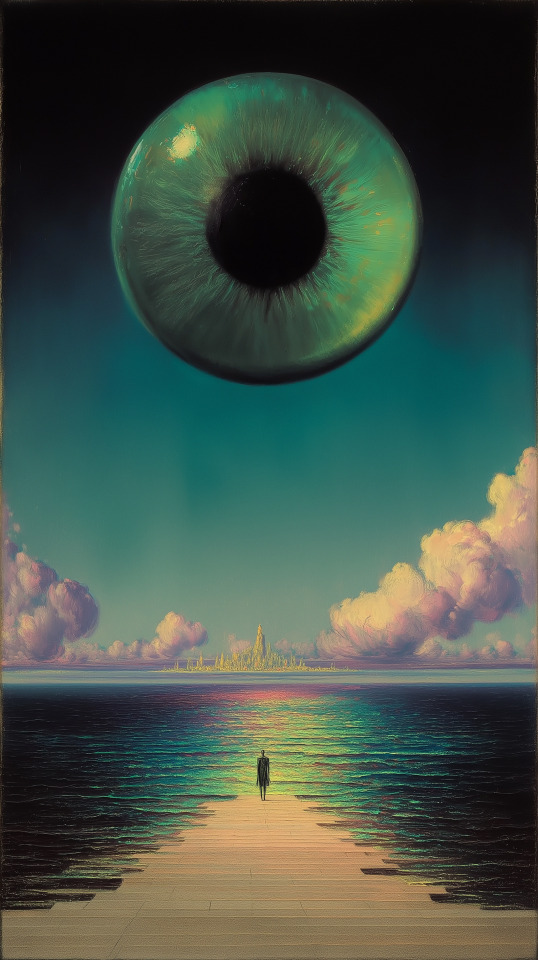
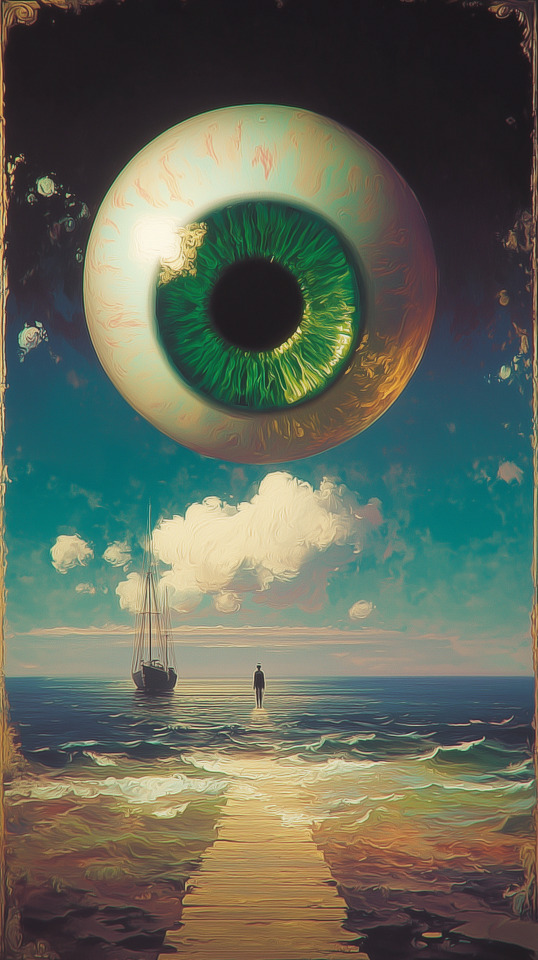
"You are not your body; you are the eye. When you see the spirit, you are free of the body. A human being is an eye – the rest is just flesh and bones. Whatever your eye sees, you are that." - Rumi
Eye of Venus Talon Abraxas
This Week's Sky at a Glance, July 4 – 12
Mercury is sinking back down out of sight into the glow of sunset.
Venus, brilliant at magnitude –4.1, rises above the east-northeast horizon a half hour or more before the first glimmer of dawn. Venus climbs higher until the dawn sky grows too bright. In a telescope Venus's shrinking globe (now only about 16 arcseconds pole to pole) has become gibbous, 65% sunlit.
Mars, magnitude 1.5 in Leo, glows low in the west in late twilight and sets soon after dark. Above it by a little more than a fist at arm's length is Denebola, Leo's tailtip, magnitude 2.1.
Jupiter, magnitude –1.9, is just beginning to emerge very low in the glow of sunrise. Late this week as dawn grows bright, try to find it about three fists to the lower left of Venus. See the July 12 view above.
Saturn (magnitude +0.9, in Pisces) rises around midnight daylight-saving time. Before and during early dawn, it's about five or six fists upper right of Venus.
The best time to try a telescope on Saturn is just before dawn, when Saturn has had time to get about 40° high while still in a dark or nearly dark sky. You may be surprised by the look of Saturn; its rings are nearly edge-on to us this year.
Uranus, magnitude 5.8, is still invisibly dim in the dawn background of Venus.
Neptune, a telescopic "star" at magnitude 7.9, lurks in Saturn's background just 1° from it. Catch this outermost major planet before dawn begins by using the finder chart for Neptune with respect to Saturn in the June Sky & Telescope, page 51. With a pencil, put a dot on the path of each of the two planets for your date. Get everything planned out and ready to go the evening before, so that dawn doesn't outrun you.
32 notes
·
View notes
Text
Random thought experiment that popped into my mind.
You are about to be transported to the stone age or the bronze age or something and you have time to prepare but you can't bring anything with you. How do you recreate the meter as precisely as possible? (Or any SI unit for that matter)
My Ideas:
Use the average diameter of a human iris.
This is probably the least variable measurement of the human body you can take. It does not vary much due to height or nutrition, and different ethnic groups typically will have vary similar size irises. By making it an average you can extract an additional decimal place of precision compared to just measuring your own.
Cons:
Irises are small compared to a meter,
It is difficult to get precise measurements and precise data.
Best case scenario still leaves you without that much precision.
Pros:
This can be done pretty much immediately.
Next method I thought of is using a pendulum of a specific period, tied to the duration of certain celestial events.
Effectively this is just extracting the meter from deriving the second. However I think units of time might be easier to derive as you can use the length of time of different celestial events as a timing mechanism which will be extremely consistent. You can use things like: how fast the moon transits the sun during a solar eclipse, or the length of a day from high noon to high noon on one of the equinoxes divided by a constant.
Pros:
Theoretical maximum precision is fairly high, as this can be cross referenced against several different measurements and refined over time
Cons:
Practical maximum precision is much lower, as taking measurements of time with neolithic tools is rather difficult. As is constructing an accurate pendulum.
You need to wait for celestial events and refine your measurements over the course of years.
Then the last method I came up with, which is rederive the meter the same way it was derived in the first place, by taking an exhaustive geographical survey of the radius of the earth and dividing by a constant.
Pros:
Theoretical maximum precision is fairly high, especially for the Kilometer.
True to history
Cons:
You need to conduct an exhaustive geographical survey of the earth...
You will be faced with the dilemma of whether or not to include the error that arose in the original historical survey that makes it so kilometers are slightly off from an arcsecond? of latitude/longitude.
8 notes
·
View notes
Text

VLT: A New 'Largest' Optical Telescope - September 1st, 1996.
"What is the largest telescope in the world? In the optical, this title was long held by the Hale 200-inch. But an even larger optical telescope was built. Dubbed the Very Large Telescope (VLT), the European Southern Observatory (ESO) built four 8.2 metre mirrors in Chile, which together act as a single telescope with a mirror diameter of over 16 metres. The first of these telescopes would be completed in 1997, and all four would be completed and working together in the year 2000. The VLT would use active optics to create sub-arcsecond resolution. This, combined with the enormous light-gathering power, would allow astronomers to explore dim objects in our galaxy and the early Universe."
21 notes
·
View notes
Text
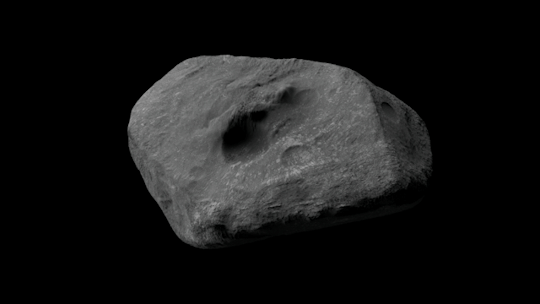
Astronomers Trace Earth-Crossing Asteroid to Surprising Origin
Maunakea, Hawaiʻi – Astronomers using W. M. Keck Observatory on Maunakea, Hawaiʻi Island have determined the physical properties and potential origin of 2024 YR4, the Earth-crossing asteroid first discovered by scientists in December 2024. The study reveals YR4 is a solid, stony type that likely originated from an asteroid family in the central Main Belt between Mars and Jupiter, a region not previously known to produce Earth-crossing asteroids.
“YR4 spins once every 20 minutes, rotates in a retrograde direction, has a flattened, irregular shape, and is the density of solid rock,” said Bryce Bolin, research scientist with Eureka Scientific and lead author of the study. “The shape of the asteroid provides us with clues as to how it formed, and what its structural integrity is. Knowing these properties is crucial for determining how much effort or what kind of technique needs to be used to deflect the asteroid if it is deemed a threat.”
The results will be published in The Astrophysical Journal Letters. A reprint of the paper, “The discovery and characterization of Earth-crossing asteroid 2024 YR4,” is available online https://arxiv.org/abs/2503.05694.
Despite being a scenario widely pondered by astronomers and Hollywood writers for decades, further observations have since determined YR4 will not impact the Earth in 2032 as originally predicted. However, there is a ~2% chance it could hit the Moon instead.
“At about 50-60 meters in diameter (similar to the width of a football field), it’s one of the largest objects in recent history that could hit the Moon,” added Bolin. “If it does, it would give scientists a rare chance to study how the size of an asteroid relates to the size of the crater it creates—something we haven’t been able to measure directly before.”
Origins and Characteristics of YR4
Asteroids that are 100 meters or larger are often what astronomers call “rubble piles,” made up of fragments from a larger parent asteroid that broke apart in a collision. The pieces from that breakup clump together to form new, loosely held-together bodies. On the surfaces of these rubble-pile asteroids, we often see large boulders—some as large as ~60 meters. At 50-60 meters in size, YR4 falls into this size range, suggesting it could have been a boulder that once sat on the surface of a larger rubble-pile asteroid.
Scientists rely on the Yarkovsky Effect to explain and predict the orbits of asteroids. There is a subtle force that happens when an asteroid absorbs sunlight and then re-emits that energy as heat. That heat, in the form of infrared light, pushes back slightly on the asteroid, slowly changing its orbit. How strongly an asteroid responds to this effect depends on its thermal inertia – how quickly it heats up and cools down.
Small, 50-meter-sized asteroids, like YR4, may have low thermal inertia, which suggests they’re made of solid rock. This differs from larger, rubble-pile asteroids, which tend to have surfaces covered in loose material and higher thermal inertia. By studying how these small objects respond to sunlight, scientists obtain indirect evidence that they may be solid chunks of rock, possibly chipped off from bigger rubble-pile asteroids.
Using data from Keck Observatory’s Multi-Object Spectrograph for Infrared Exploration (MOSFIRE), Bolin and team were able to observe YR4 in the infrared, seeing properties of the asteroid that would otherwise be impossible to observe. The study uses additional data from the Asteroid Terrestrial-impact Last Alert System or ATLAS, developed by the University of Hawaiʻi and funded by NASA, as well as the Gemini South telescope in Chile, one half of the International Gemini Observatory, partly funded by the U.S. National Science Foundation and operated by NSF NOIRLab.
The instrumental window Bolin and his team had for observing this object was only 4 arcseconds wide, projecting to a very small patch of the sky, requiring precision measurement only Keck Observatory could provide.
“This object’s orbit was so well determined we knew its position to within less than an arcsecond. It was moving less than 10 arcseconds per minute, if we were off target the background static stars would have been trailed, but we got it on our first try,” said Bolin. “It was a serendipitous set of circumstances that allowed us to do these observations.”
Serendipitous because Bolin’s original science case was imaging for trans-Neptunian objects, but due to technical difficulties, his team was able to pivot at the last minute to image the object, obtaining data that may one day play a crucial role in saving our planet from impact. “The data from our study will be used to assess the physical properties and shapes of potentially impacting asteroids, providing a great test case on the kind of rapid response observations that are necessary to characterize a potential threat like this object. The physical information about an asteroid’s physical property (rubble pile vs solid rock) is crucial for planning mitigation efforts if necessary.”
youtube
5 notes
·
View notes
Text
Stellar Parallax: Peering into the Depths of the Universe
In the huge space of the universe, where stars sparkle like faraway lights in the dark sky, there's something special called stellar parallax. This idea has helped us learn a lot about the universe. It allows astronomers to measure how far away stars are, draw maps of our galaxy, and the Milky Way, and explore space better than ever. In this article, we'll look at stellar parallax, where it came from, and how we use it today.
Understanding Stellar Parallax
Stellar parallax happens because the Earth moves around the Sun. When this happens, stars closer to us seem to move a little compared to stars farther away. This movement is called parallax. If a star is really close to Earth, it will seem to move a lot. Astronomers use this movement to figure out how far away a star is.
Imagine you're looking at your finger with one eye closed, then you switch eyes. Your finger seems to move against the background, right? That's like what happens with stars. When Earth moves around the Sun, the closer stars seem to shift their position against the farther ones. It's like the finger movement but on a huge scale because stars are incredibly far away. This shifting is what we call stellar parallax.
Historical Perspectives
For many years, astronomers were fascinated by the idea of stellar parallax, which could help measure how far away stars are. But they couldn't observe it because their tools weren't advanced enough. In the early 1600s, Johannes Kepler, a famous astronomer, suggested that stellar parallax could be used to measure distances to stars. However, it wasn't until the 1800s that technology improved enough for astronomers to actually see and measure stellar parallax.
In 1838, a scientist named Friedrich Bessel did something incredible. He used really good tools and paid close attention to detail to measure something called "stellar parallax." This is when stars seem to move slightly because of the Earth's movement. Bessel focused on a star called 61 Cygni and found out how far away it was using this method. This was a big deal because it showed that we could figure out how far away stars are by watching how they move. Bessel's work was super important and started a new way for scientists to explore space.
Principles of Measurement
Measuring stellar parallax is like using a ruler to figure out how far away something is. Instead of a ruler, astronomers use the Earth's orbit around the Sun. When the Earth is on one side of the Sun, and then on the other side six months later, stars seem to move slightly against the background. It's like looking at your finger with one eye closed and then switching eyes. By measuring this tiny shift in a star's position from different points in Earth's orbit, astronomers can calculate how far away the star is. This helps us understand the distances to stars in space.
The angle of parallax, denoted by the symbol θ (theta), is inversely proportional to the distance to the star. This means stars with larger parallaxes are closer to the Earth, while those with smaller parallaxes are farther away. To convert the angle of parallax into a distance measurement, astronomers use the formula:
Distance to star (in parsecs) = 1 / parallax angle (in arcseconds)
This fundamental relationship forms the basis for determining the distances to stars through stellar parallax.
Modern Applications
In the modern era, stellar parallax remains an invaluable tool for astronomers seeking to unravel the mysteries of the cosmos. With advancements in technology and observational techniques, astronomers can now measure stellar parallax with unprecedented precision, extending our cosmic reach to the farthest reaches of the galaxy.
One of the most notable applications of stellar parallax is in the construction of the cosmic distance ladder, a hierarchical series of distance measurement techniques used to determine the distances to celestial objects at various scales. Stellar parallax serves as the first rung on this ladder, providing accurate distance measurements to nearby stars within our own Milky Way galaxy.
Beyond our galaxy, stellar parallax has been instrumental in measuring the distances to nearby galaxies, such as the Andromeda galaxy (M31) and the Large Magellanic Cloud. By observing the parallax of stars within these galaxies, astronomers can calibrate distance indicators and estimate the vast distances to extragalactic objects.
Furthermore, stellar parallax plays a crucial role in the search for exoplanets – planets orbiting stars outside our solar system. By measuring the tiny wobbles in a star's position caused by the gravitational pull of an orbiting planet, astronomers can infer the presence of exoplanets and even estimate their masses and orbital parameters.
Challenges and Limitations
Even though stellar parallax helps us measure distances to stars, it has some drawbacks. One big problem is that we can only use it for stars relatively close to us. This is because we rely on the Earth's movement around the Sun to observe the parallax, and our orbit provides a limited viewing angle. So, we can only accurately measure the distance to stars within a few hundred parsecs, which is still quite far in space terms. This means that for stars farther away, we need other methods to figure out how far they are from us.
When astronomers measure stellar parallax, they face some challenges. These include mistakes in observations, stars moving, and dust between us and the star. Especially when dealing with stars that are faint or very far away, these factors can make measurements uncertain. To overcome these challenges, astronomers use smart methods and math tricks. They analyze data carefully and apply statistical tools to make sure their distance measurements are as accurate as possible. This way, they can still figure out how far away stars are, even with these obstacles in their way.
Looking to the Future
As technology gets better and we find new ways to look at the stars, stellar parallax will become even more important for studying space. It will help us learn more about faraway galaxies and find new planets beyond our solar system. So, as we keep exploring the universe, stellar parallax will remain a key tool for understanding how everything works out there.
In the next few decades, new missions in space and observatories on Earth will help us get even better at measuring stellar parallax. This will give us a clearer view of the universe. Every new thing we learn brings us a step closer to understanding the universe and figuring out where we fit into it.
Conclusion
Stellar parallax stands as a testament to humanity's insatiable curiosity and relentless pursuit of knowledge. From its humble beginnings in the minds of ancient philosophers to its modern-day applications in cutting-edge astrophysics, stellar parallax has reshaped our understanding of the cosmos and illuminated the vastness of space in ways previously unimaginable.
As we continue to gaze up at the stars and ponder the mysteries of the universe, let us remember the profound insights afforded to us by stellar parallax – a celestial phenomenon that has forever changed the way we perceive the cosmos and our place within it.
FAQs
What is the largest stellar parallax? Proxima Centauri is the closest star to Earth. It's about 4.3 light-years away, which is really far—nearly 300,000 times farther than the distance from Earth to the Sun! Its distance is measured using something called parallax, which is like the apparent shift in position of an object when viewed from different angles. Proxima Centauri has the biggest parallax we've seen among stars, showing how close it is compared to others in space.
What is the difference between parallax and stellar parallax? Stellar parallax is like when you hold your finger in front of your face and close one eye, then switch eyes. Your finger appears to move against the background. Similarly, when we look at stars from different positions in Earth's orbit around the Sun, nearby stars seem to shift against the backdrop of distant stars. Scientists use this shift, called stellar parallax, to figure out how far away the stars are. It's like measuring the distance by comparing angles, kind of like how you might estimate the distance to an object by looking at it with one eye, and then the other.
What are the two limits to stellar parallax? When we observe stars from Earth, we can only measure their distances accurately up to a certain point. This is because we use the Earth's orbit around the Sun as a reference, and smaller angles are harder to measure precisely. So, stars farther than about 100 parsecs away (a unit of distance in space) are difficult to measure accurately from Earth because their parallax angles (the apparent shift in position when viewed from different points) are too small to measure well.
What is the smallest parallax? Stellar parallax is a way to measure how far away stars are by looking at how they appear to shift against the background of more distant stars as the Earth moves around the Sun. Stars are incredibly far away, so this shifting is very tiny and hard to detect. The smallest shifts we can measure right now are about 0.001 arcseconds, which means the star is about 1000 parsecs away.
Read more
13 notes
·
View notes
Text
Physics "Friday" #9 [OPINION]: Is Fahrenheit the better temperature scale?
So as the title suggests, this post is a lot less facts and logic, and a lot more opinionated. It is still physics-y I just believe it's an interesting way to delve into a subject by turning it into an opinionated peice.
Preamble: A summary of Metric vs. Imperial arguments
Education level: Primary (Y3/4)
Topic: Measuring Systems (Metrology)
Now before you throw your hands up at the title and your silly little internet brain is like "this silly impericuck is fahrenpilled!" ... I'm an astronomy student living in Australia - I use SI units (and other unit systems) on the daily.
Though ... it is pretty notorious in astronomy to use like 17 different unit systems. Here's a list of examples:
My beloved SI units
CGS Units
Whatever the fuck a Jansky is
Don't even start with natural units I can't live without big G
"Ampere in CGS units is g1/2 cm3/2 s−2"
Solar Luminosity/Mass of Sun
Angstroms (like please can we just use nanometers?)
How many Jupiters or Earths fit into this cloud of gas?
The vomit of parallax units i.e. AU, pc, Mpc, arcseconds, radians
Steradians (Solid angles can be finicky)
Logarithms, logarithms everywhere!
Hubble's constant being in km/s/Mpc but then having to turn that into Hz or per year - like can someone please acknowledged how cursed this is?
When you do Kepler's 3rd law on Mercury and realise it doesn't work (because you forgot Einstein existed) ... so no units end up working
ADUs and/or whatever you get when you deal with telescope outputs
And as an Australian, I use SI units very regularly. Only measurements of human height and cooking weights are really imperial. And I can express all of them in metric units.
Now generally, the Metric (or SI) units are better than the imperial (or USC) units. The main points in favour of SI are:
(Almost) Everybody uses it
It's basically universal in science (see exceptions above)
It fits well with our base 10 counting system, easy scaling (e.g. 1 kg = 1 000 g = 1 000 000 mg)
It's directly pinned to many natural constants and unchanging laws
Different units interact with eachother much better
Now, generally, the main arguments for imperial units involve a bunch of patriots™ screaming about how "THIS IS THE CoUNTRY OF FREEDOM AND GOD!! AND I AIN'T USING NO CHINESE UNITS!!!1!".
That, or how metrification is hard. Which, well, metrification can occur over the course of decades, literally teaching your kids metric helps the country adjust to a metric system.
The best arguments I've found for imperial units is as follows:
Numbers like 6, 12, 60 etc. - i.e. units based on highly composite numbers - are very easily divisible by 2, 3, and 4
Units like feet, inches, pounds, stone, etc. are of a much more human-friendly scale. Because these units are based on bodily proportions or common objects
Generally, the arguments for metric vastly outweigh the arguments for imperial. And the main reason why is that the two arguments for imperial conflict with eachother. You cannot easily subdivide your units neatly and have human units.
For example, the Roman mile is a unit that measures the usual amount of distance a footsoldier can cover before needing a short stop. An acre is the amount of land that a manual-labour farmer can cover in a day's work. An inch is about the size of your thumb.
The problem is that all three of these units, based on length, are completely off kilter. 1 acre = 43,650 square feet, 1 Roman mile = 58260 in, etc.
The only cases where I would say the human-ness and divisibility of units actually becomes a stronger argument than decimalised units are, time and temperature.
Time is obvious. 1 hour = 60 minutes = 3600 seconds. It's nice, clean and simple. And an hour or half-hour is a very human unit, the same as a second or a minute. We often operate on hour and minute schedules, and that's not just because of capitalism. 30 minutes just appears to be the amount of time we like to work before taking a short rest.
Temperature is a bit more nebulous however ...
Where (I think) Celsius fails
Of course, celsius is an understandable scale. 0 C = Water Freezes, 100 C = water boils. Pinning your scale on water makes life easy for you as you know what the bounds are.
The problem is that there are temperatures that exist outside of the 0-100 scale. And this kinda breaks the neat decimalisation of a scale.
A cold winter's day in Tasmania could drop into the negatives. And just because your in the negatives doesn't mean ocean water or rain will freeze. Temperatures below 0 C doesn't guarantee snowfall.
Similarly, say you are in a desert during the day. The temperature can get as high as 50 C - it's reasonable to say that you're unlikely to see temperatures above 50 C outside of your oven or kettle.
Do you normally see temperatures between 70 - 90 C? Unless if you're pasteurising milk, distilling alcohol, or doing chemistry, you are not going to encounter these temperatures. And do you really need your temperature numbers to be below 100 to do chemistry?
This is the downside of Celsius. Because temperature is a scale, and operates differently to other units, it doesn't really matter where you set the zero point. A boiling point of ethanol at "78" is no better than one at "173".
Celsius also doesn't account for temperatures that are very well below the freezing point of water, temperatures which are very common to experience.
So is Fahrenheit Better?
Fahrenheit solves this problem, partially. It's a more human friendly scale. 0 F is a very very cold day whereas 100 F is a very very hot day. Things beyond both numbers are relegated to the scientists, chefs, and extremophiles of the world.
If we were to completely remove all requirements of not pissing off a bunch of people, we could even create our own temperature scale to make things even better: 0 X = -50 C and 100 X = 50 C.
Even better because now the 0 and 100 of this scale becomes the absolute limit of what we could normally experience on earth, the hottest desert and the coldest tundra. It even comes with the benefit that 50 X = the freezing point of water and 150 X = the boiling point of water - it preserves our common "anchors" of the phases of water.
The problem is that there's a second hidden benefit of Fahrenheit: it's specificity. What do I mean by that?
Well, for every 1 C increase in temperature, the Fahrenheit scale increases by 1.8 F. This means that a temperature of 20 C could mean 68 F or 69 F.
For a lot of normal/casual processes, the Celsius scale may require us get past the decimal point, to express minor changes in temperature, whereas Fahrenheit would not.
For chemistry and physics, our significant figure requirements immediately become extra precise. 58.8 F is a more accurate measurement than 14.9 C, without requiring any more decimal places.
You may say "well why not we use a deci-Celsius scale where 1000 dC = boiling point of water". The issue is that too much precision may be putting it over the top. We don't measure the size of cities in centimetres.
But then what about Kelvin
Of course, the main SI unit for temperature, and the unit physicists and chemists use is the Kelvin. The reason for this is of course:
It is tied to absolute zero by setting it to 0 K
Because of this, we can apply SI order of magnitude quantifiers like milli-Kelvin, kilo-Kelvin, Giga-Kelvin without upsetting the position of our anchor points
It covers and measures cleanly low-K processes
Very hot processes end up having Celsius be approximately equal to Kelvin
It would be difficult to use Fahrenheit because 0 F ~ the freezing point of saltwater.
But let me introduce you to the Rankine Scale. What Kelvin is to Celsius is what Rankine is to Fahrenheit.
Rankine takes all of the benefits of Fahrenheit with it (aside from the human-ness of the scale - but that's not the purpose of the Rankine and Fahrenheit scales), but it also takes the benefits that Kelvin gets.
We can too, have milli-Rankine and Giga-Rankine. And the best part is that it is twice as precise as Fahrenheit.
Even better is that the Rankine Scale is very easily convertible to the Kelvin Scale. 1 K = 1.8 R; 1 K⁻¹ = 0.556 R⁻¹. This means I can very easily re-formulate some fundamental constants:
Boltzmann constant = 1.381 × 10⁻²³ J K⁻¹ = 7.672 × 10⁻²⁴ J R⁻¹
Stefan-Boltzmann c. = 5.67 × 10⁻⁸ W m⁻² K⁻⁴ = 5.40 × 10⁻⁹ W m⁻² R⁻⁴
Ideal gas constant = 8.315 J mol⁻¹ K⁻¹ = 4.619 J mol⁻¹ R⁻¹
Wein's constant = 2.898 × 10⁻³ m K = 5.216 × 10⁻³ m R
Let's hope I converted it correctly, idk my Saturday brain no thinky.
Conclusion: So is it actually better?
Short Answer: In my opinion, yes. But I'm not switching to it.
Of course, when talking about subjective opinions, people can point out the flaws in each others' opinions. I've made it clear that the imperial vs. metric debate very solidly falls to the metric side with only a few exceptions.
Temperature is one of those scales that are more up-to-debate over the usefulness of certain units of choice. Especially because the alternative unit system is still commonly used.
I could've made the same arguments about the meter, and said that we should use a decimalised inch or foot with kilofeet or millifeet. Or invent a completely new unit system that is technically "superior". But that's obviously much more ambitious.
Of course, the likelihood of the global Fahrenheit revolution is almost non-existent, and this is more of a series of "well, technically speaking" arguments that are more for the point of exploring an idea than implementing one.
Regardless I'd like to hear YOUR arguments over why I'm a stupid poo poo head or I'm actually the mother of the next great napoleonic French empire.
I tried to add a bit of colour in this post, specifically with the quotes. I just didn't want it to be a bland wall of text.
Again, feedback that may be unrelated to the specific "you're right/you're wrong" debate like my writing style etc. is also appreciated.
I don't really know what I will do next week. Because technically I was supposed to do philosophy and ethics in science ... but I might not have that time given my university study.
Currently I'm doing three courses in QFT, GR, and Cosmology. And they are all very big and hefty. Thankfully, I think there's a bit of a break period coming as we're now moving to canonical quantisation (which I've found easier than Feynman diagrams), and the measurement of gravitational waves.
Now don't worry that last paragraph is not a flex, it's more an indication that I'm learning a lot of this stuff as I make these posts. More an excuse as to why I might in the future delay posts and such. Like I mentioned the Higgs mechanism in the last post at the same time I was actually learning about the Higgs mechanism.
Anyways, I'm going to go and scarf down some chocolate now.
13 notes
·
View notes
Note

KAIA YOU FUCKING NUMSKULL WHY WOULD YOU CALL THAT A CHASEPURR WHEN YOU COULD CALL THAT A PURRCHASER IT WAS RIGHT THERE TWO ARCSECONDS TO YOUR LEFT AND YOU DIDNT SEE IT DO I HAVE TO DO EVERYTHNIG MYSELF HERE
whats the pun here? purchaser? what is halimede for catboys purchasing? i mean i guess catboys and catboy accessories but like. standard halimede isn't purchasing luna-terras from the luna terra store she is Fumbling Them. im not sure I understand purrchaser
6 notes
·
View notes
Text

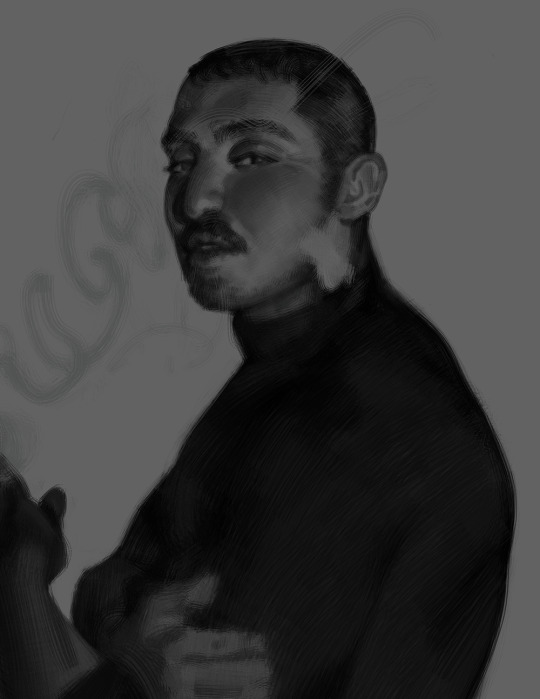
still doing these sketchy portraits. here are the siblings Siroun and Enver, from my comics. (Siroun wasn't in THE SOLAR SYSTEM, but will appear in BIRTH OF THE SUN/ONE ARCSECOND :9 she's very crucial to enver's whole deal.)
#birth of the sun#one arcsecond#painting#sketches#comics#queer comics#putting those tags in because the comic(s) are coming sewn... some might say they're already here... but...
150 notes
·
View notes
Text
Rigel: Orion's Brightest Star

Rigel is a star you can easily spot in the night sky. It is the brightest star in the constellation Orion (the hunter) and the seventh brightest star in the night sky. But did you know that Rigel is not just one star but a system of four stars? And that is a blue supergiant, one of the most massive and luminous stars in our galaxy? I will be focusing on Rigel and its companions in this post.
What is Rigel?


What are Rigel’s Companions?
Rigel is not alone in its orbit around the center mass of the system. It has three companions: Rigel Ba, Rigel Bb, and Rigel C. These are all main-sequence stars, which means they still burn hydrogen in their cores. They are also blue-white, with spectral types of B9 V. They have similar masses and radii, ranging from 2.94 to 3.84 times that of the Sun and from 2.5 to 3 times that of the Sun respectively.
Rigel Ba and Rigel Bb form a close pair that orbits each other every 9.86 days. They are so close that they cannot be seen separately, even with powerful telescopes. They are called a spectroscopic binary because their orbital motion can be detected by measuring the Doppler shifts in their spectral lines.

Rigel A and Rigel Bc form an even wider pair that orbits each other every 24,000 years. This pair can be seen with binoculars or small telescopes under good conditions.
There is also a fifth star that may be part of the system, but it is not confirmed yet. It is a faint red dwarf star of magnitude 15.3 that lies about 220 arcseconds* away from Rigel A.
*(Arcseconds, also known as arc-seconds or arc seconds, are a unit of angular measurement used in various fields, including astronomy, geodesy, and navigation. They are a subdivision of an arcminute, a unit of angular measurement equal to 1/60th of a degree.)
How Did Rigel Form and Evolve?
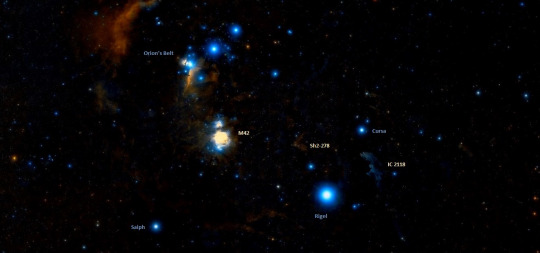
Rigel started as a massive main sequence star that burned the hydrogen in its core very quickly. As the hydrogen was depleted, the star began to contract and heat up, while its outer layers expanded and cooled down. As a result, Rigel became a supergiant star.
Rigel will continue to fuse heavier elements until it reaches iron, which cannot release any more energy by fusion. (Stars undergo fusion reactions in their cores, where lighter elements combine to form heavier elements, releasing energy in the process of fusion. A fusion process continues until the core contains predominantly iron. At this point, the process of fusing iron requires more energy than it releases, slowing down. This process poses a problem because fusion reactions provide the outward pressure that counteracts the inward pull of gravity, supporting the star against collapse. Without the energy generated by fusion, the star loses its means of support and can eventually collapse under its gravity.) At this point, Rigel will collapse and explode into a supernova. But this won’t happen for another million years or so.
The supernova explosion will destroy most of Rigel’s mass and eject it into space as gas and dust. The training core will either become either a neutron star or a black hole, depending on how massive it is.
The fate of Rigel's companions will depend on how close they are to Rigel when it explodes. If they are too close, they will be destroyed or disrupted by the shock wave and radiation from the supernova. If they are far enough, they will survive but may be affected by the change in gravity and radiation from the remnant.
Rigel is important for several reasons. First, it is a prominent star that helps us identify the constellation of Orion and find other stars in the sky. Second, it is a bright and nearby example of a supergiant star, which helps us understand the evolution and fate of massive stars. Third, it is a complex star that challenges our ability to observe and measure its components and interactions. Fourth, it is a potential supernova progenitor that may explode in the near future (in astronomical terms, of course) and provide us with a spectacular show and valuable data.
Rigel is also important for cultural reasons. It has been known and named by many civilizations throughout history, and it has been associated with various myths and legends. In ancient China, Rigel was called Shang Zuo, meaning "the left-hand seat of the king," and it was part of the Three Stars asterism that represented the emperor's throne. In Arabic, Rigel was called Rijl al-Jawza', meaning "the foot of the central one," referring to Orion as a giant. In modern times, Rigel has been featured in many works of science fiction and fantasy, such as Star Trek, The Hitchhiker's Guide to the Galaxy, and The Chronicles of Narnia.
Rigel is a fascinating star that deserves our attention and admiration. It is not only a beautiful sight in the night sky, but also a rich source of scientific information and cultural inspiration. I hope you enjoyed learning about Rigel and its companions, and I encourage you to look for them the next time you gaze at the stars. And as always, this blogger has to sign out, Stay With Wonder!
5 notes
·
View notes
Text
Fine Guide Star Sensor Market, Trends, Business Strategies 2025-2032
The global Fine Guide Star Sensor Market was valued at 1796 million in 2024 and is projected to reach US$ 3023 million by 2032, at a CAGR of 7.9% during the forecast period.
Fine Guide Star Sensors are high-precision optical devices that enable precise pointing and tracking in astronomical telescopes. These sensors measure star positions with sub-arcsecond accuracy to compensate for atmospheric turbulence, satellite vibrations, and mechanical instabilities. The technology plays a critical role in both ground-based and space-based telescopes, with applications ranging from astronomical research to Earth observation satellites. The growing demand for high-resolution space imaging and the increasing deployment of small satellites are key drivers for this market.
The market expansion is fueled by several factors, including increasing investments in space exploration programs, growing adoption of adaptive optics in astronomy, and technological advancements in sensor miniaturization. Leading manufacturers are developing next-generation sensors with improved sensitivity and lower power consumption to meet the requirements of modern space missions. While the aerospace segment currently dominates application areas, emerging opportunities in defense and commercial satellite sectors are expected to contribute significantly to future growth.
Get Full Report with trend analysis, growth forecasts, and Future strategies : https://semiconductorinsight.com/report/fine-guide-star-sensor-market/
Segment Analysis:
By Type
Variable Frequency Segment Leads Due to Precision and Flexibility in Adaptive Optics Systems
The market is segmented based on type into:
Variable Frequency
Direct Frequency
By Application
Aerospace Sector Dominates with Growing Utilization in Space Telescopes and Satellite Imaging
The market is segmented based on application into:
Aerospace
Medical Technology
Mechanical Engineering
Automotive Industry
Electrical Industry
By End User
Research Institutions Account for Major Adoption Due to Astronomical Observation Needs
The market is segmented based on end user into:
Space Research Organizations
Defense Agencies
Academic Institutions
Commercial Aerospace Companies
Regional Analysis: Fine Guide Star Sensor Market
North America North America leads the Fine Guide Star Sensor (FGSS) market, driven by robust investments in astronomical research and space exploration. The region boasts key installations like the Hubble Space Telescope and upcoming projects such as the James Webb Space Telescope (JWST). The U.S. government allocated over $25 billion to NASA in 2024, with a significant portion directed toward optical instrumentation development. Major academic institutions and private aerospace firms contribute to demand, particularly for high-precision FGSS in both ground and space-based observatories. However, stringent export controls and regulatory hurdles occasionally delay implementation, especially for dual-use technologies with military applications.
Europe Europe remains a critical hub for astronomical instrumentation, supported by collaborative initiatives like the European Southern Observatory (ESO) and the European Space Agency (ESA). The region emphasizes adaptive optics (AO) advancements, with FGSS playing a pivotal role in projects such as the Extremely Large Telescope (ELT). European research facilities prioritize high-precision calibration and sustainability, driving innovation in laser-assisted FGSS. Despite strong R&D, budget constraints in smaller EU nations limit widespread adoption, though Germany and France continue to dominate the regional market due to their established aerospace and optical engineering sectors.
Asia-Pacific The Asia-Pacific region is the fastest-growing market for FGSS, led by China’s ambitious space programs and India’s expanding astrophysics research capabilities. China’s Lunar Exploration Program and India’s AstroSat mission highlight the rising demand for high-accuracy sensors. Additionally, countries like Japan and South Korea are investing in next-gen telescopes, focusing on miniaturization and cost-efficiency. However, intellectual property challenges and reliance on imported high-end components create bottlenecks. Local manufacturers are gradually bridging this gap, yet North American and European firms currently supply over 60% of high-end FGSS units in the region.
South America South America shows moderate growth, with Chile emerging as a focal point due to its hosting of major observatories like the Atacama Large Millimeter Array (ALMA). Brazil and Argentina are increasing investments in local astronomy projects, but economic instability and underdeveloped supply chains slow progress. While demand for FGSS exists, budgetary priorities often shift toward terrestrial infrastructure, limiting consistent procurement. Partnerships with international research consortia offer opportunities for incremental adoption of advanced sensing technologies.
Middle East & Africa The Middle East & Africa region is an emerging market, with the UAE and Saudi Arabia making strides through projects like the Arab Space Agency and Neom Observatory. South Africa’s Square Kilometre Array (SKA) project underscores long-term potential, though limited local manufacturing capabilities necessitate reliance on imports. Geopolitical tensions and funding volatility hinder rapid adoption, but strategic collaborations with global players could accelerate FGSS integration in the coming decade.
MARKET OPPORTUNITIES
Expanding Applications in Defense and Earth Observation Create New Revenue Streams
While originally developed for astronomical applications, fine guide star sensor technology is finding growing adoption in defense and Earth observation systems. Modern reconnaissance satellites require similar precision pointing capabilities as astronomical telescopes, with military applications driving substantial investment. The global market for electro-optical/infrared satellite payloads is projected to exceed $8 billion by 2028, representing significant cross-selling potential for sensor manufacturers. Additionally, emerging Earth observation constellations focused on climate monitoring and precision agriculture are creating demand for cost-optimized guidance solutions.
Commercial space sector growth presents additional opportunities:
➤ Space tourism operators are beginning to equip observation modules with fine guidance systems to provide passengers with stabilized celestial viewing experiences during flight.
Partnerships between aerospace companies and sensor manufacturers are accelerating, with several major contracts announced in 2023 for next-generation guidance systems in both government and commercial space programs.
FINE GUIDE STAR SENSOR MARKET TRENDS
Rising Demand for Space Exploration Drives Market Growth
The Fine Guide Star Sensor market is experiencing robust growth due to increasing investments in space exploration missions and the expansion of astronomical research. With the global market valued at $1796 million in 2024 and projected to reach $3023 million by 2032 at a CAGR of 7.9%, the demand for high-precision guide star sensors is accelerating rapidly. These sensors are critical in adaptive optics systems, which reduce atmospheric distortion in ground-based telescopes and improve observational accuracy for distant celestial objects. The growing number of space agencies and private enterprises launching satellite constellations for Earth observation and deep-space missions further amplifies market opportunities.
Other Trends
Technological Advancements in Sensor Accuracy
Recent innovations in fine guide star sensors are enhancing their sensitivity and resolution, making them indispensable in high-end astronomical applications. The integration of artificial intelligence and machine learning into sensor calibration systems allows real-time adjustments, reducing error margins in telescope positioning. Additionally, the shift toward direct frequency sensors in modern observatories offers higher stability compared to traditional variable frequency models. These advancements are expected to create lucrative opportunities in both commercial and defense-related applications.
Expansion in Adaptive Optics and Laser Guide Star Applications
The adoption of adaptive optics (AO) systems in large ground-based telescopes is increasing, leveraging fine guide star sensors to mitigate atmospheric blurring. Laser guide star (LGS) technology, where artificial reference stars are generated using high-powered lasers, is gaining traction in astronomical research, further boosting the demand for these sensors. Meanwhile, space-based telescopes increasingly rely on fine guide star sensors for long-duration exposure missions, fueling growth in aerospace and defense sectors. Collaborations between academic institutions and sensor manufacturers continue to drive innovations, ensuring the market remains dynamic and responsive to evolving research needs.
COMPETITIVE LANDSCAPE
Key Industry Players
Innovation and Technological Leadership Drive Market Competition
The global Fine Guide Star Sensor market features a dynamic competitive landscape, with multiple players vying for technological dominance. TE Connectivity has emerged as a key market leader, leveraging its extensive expertise in sensor technology and strong aerospace applications. The company’s recent partnership with major telescope manufacturers underscores its commitment to expanding high-precision optical sensing capabilities across astronomy and space exploration sectors.
German firms Sensitec GmbH and Kistler Instrumente AG have established strong positions in Europe’s optical sensor market, particularly for adaptive optics applications in ground-based observatories. Meanwhile, Technica Optical Components, LLC continues to make strides in North America with its proprietary wavefront sensing technology that reduces atmospheric distortion by up to 15% compared to conventional systems.
The market has witnessed increased activity from Japanese and Chinese manufacturers who are accelerating localization efforts to meet growing regional demand. Several mid-sized companies are focusing on niche applications like laser guide star sensors for next-generation adaptive optics systems, creating specialized market segments with higher margins.
Recent strategic developments include the acquisition of Senstech AG by a major instrumentation conglomerate and MAXON MOTOR GmbH’s expansion into integrated guidance sensor solutions. Such moves indicate ongoing consolidation in the sector as companies seek complementary technologies to build comprehensive system offerings.
List of Key Fine Guide Star Sensor Companies Profiled
TE Connectivity (U.S.)
diribo (Germany)
Technica Optical Components, LLC. (U.S.)
BEMKO Sp. z o.o. (Poland)
Polycontact AG (Switzerland)
Sentronic AG (Germany)
Kistler Instrumente AG (Switzerland)
Senstech AG (Switzerland)
MARTENS ELEKTRONIK GmbH (Germany)
Bürklin GmbH & Co. KG (Germany)
MAXON MOTOR GmbH (Germany)
pro micron GmbH (Germany)
Sensitec GmbH (Germany)
3S GmbH – Sensors, Signal Processing, Systems (Germany)
a.b.jödden GmbH (Germany)
Learn more about Competitive Analysis, and Forecast of Global Fine Guide Star Sensor Market : https://semiconductorinsight.com/download-sample-report/?product_id=103483
FREQUENTLY ASKED QUESTIONS:
What is the current market size of Global Fine Guide Star Sensor Market?
->Fine Guide Star Sensor Market was valued at 1796 million in 2024 and is projected to reach US$ 3023 million by 2032, at a CAGR of 7.9% during the forecast period.
Which key companies operate in Global Fine Guide Star Sensor Market?
-> Key players include TE Connectivity, Sensitec GmbH, MAXON MOTOR GmbH, 3S GmbH, and Senstech AG, among others.
What are the key growth drivers?
-> Key growth drivers include increasing space exploration missions, growing demand for high-resolution astronomy, and advancements in adaptive optics technology.
Which region dominates the market?
-> North America currently dominates the market with 38% share, followed by Europe, due to significant investments in space research and telescope projects.
What are the emerging trends?
-> Emerging trends include integration with artificial intelligence for improved star tracking, development of compact sensors for small satellites, and increased use of laser guide star systems.
CONTACT US:
City vista, 203A, Fountain Road, Ashoka Nagar, Kharadi, Pune, Maharashtra 411014 +91 8087992013 [email protected]
0 notes
Text

“Venus favors the bold.” — Ovid Eye of Venus Talon Abraxas This Week's Sky at a Glance, June 6 – 15 Mercury and Jupiter hide way down in the glow of sunset. Jupiter is magnitude –1.9, Mercury is about –1.0, so early in the week Jupiter is the one you'll pick up first (Mercury at that time is a couple degrees to its right or lower right). But Jupiter fast sinks away day by day, while Mercury hangs in there. Venus, brilliant at magnitude –4.3, rises in the east-northeast just before the beginning of dawn. Once Venus is up in the clear you can't miss it. . . until the sky grows too bright. How long can you follow Venus farther up until it's lost in the growing light of day? In a telescope, Venus's shrinking globe (about 21 arcseconds pole to pole) appears just about half lit. Mars (magnitude +1.4, in Leo) shines in the west right after dark. Mars is drawing nearer to Regulus every night. They're still nearly equal in brightness. On June 6th Mars is still 9° to Regulus's lower right, but by the 13th they close to just 2°. They'll have a close conjunction on June 16th and 17th, passing 0.8° apart. In a telescope Mars is just a fuzzy little blob 5 arcseconds in diameter. But that's definitely more extended than pointlike Regulus. Saturn (magnitude +1.1, at the border of Aquarius and Pisces) rises around 1 or 2 a.m. In early dawn, find it three fists at arm's length upper right of Venus. If you get your telescope on Saturn in the dawn, expect a fuzzy little ball with a surprisingly low surface brightness, very slightly oval, with signs of a toothpick stuck though it diagonally. The toothpick is Saturn's rings; we see them nearly edge-on this year. Uranus is out of sight low in the dawn. Neptune, a telescopic "star" at magnitude 7.9, lurks in the background of Saturn about 1° to its upper left (celestial north) just before dawn begins. All this year, use the finder chart for Neptune with respect to Saturn in the June Sky & Telescope, page 51. Using a pencil, put a dot on the path of each planet for your date.
24 notes
·
View notes
Text
All of the Stars, All of the Time
A number of the largest objects within the evening sky to view by way of a telescope are galaxies and supernova remnants, usually many occasions bigger in measurement than the moon however typically a lot much less vivid. Even so, they take up a mere fraction of the evening sky, with even the most important planets in our photo voltaic system solely taking over just a few arcseconds and stars…
0 notes
Text

A Very Large Array of Radio Telescopes - June 21st, 1996.
"Pictured above is one of the world's premiere radio astronomical observatories: The Very Large Array (VLA). Each antenna dish is as big as a house (25 meters across) and mounted on railroad tracks. The VLA consists of 27 dishes - together capable of spanning the size of a city (35 kilometers). VLA, once the most sensitive radio telescopes ever, through interferometry, can resolve a golf ball-sized radio source 150 kilometers away (0.04 arcseconds). The VLA is continually making new discoveries, including determining the composition of galaxies, passing comets, quasars, HII regions, and clusters of galaxies. The VLA is also used to receive the weak radio signals broadcast from interplanetary spacecraft. The VLA is located in New Mexico, USA."
19 notes
·
View notes